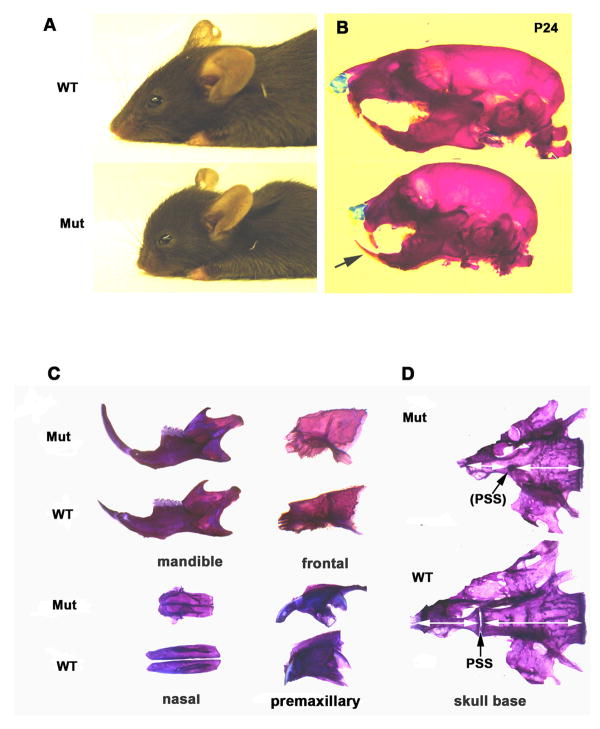Fig. 1.
Neural crest-specific inactivation of Pkd1 results in impaired postnatal growth of the rostral craniofacial skeleton and malocclusion. (A) Exterior morphology of wild type and conditional Wnt1-Cre;Pkd1 mutants at weaning. (B) Alizarin red and Alcian blue staining of control and mutant skulls reveals a maxillary retraction and underbite (arrow) in Pkd1-deficient mice. (C) Comparative morphological studies of individual craniofacial bones from adult wild type and Wnt1-Cre;Pkd1 mutant littermates stained with alizarin red reveal a mild longitudinal growth defect of the mutant mandible and frontal bone in contrast to the severely affected growth of the nasal and premaxillary bones. (D) Early postnatal obliteration of the presphenoid synchondrosis (arrow) in Pkd1-deficient mice results in the shortening of the sphenoid bones (double-headed arrows). Mut-Wnt1-Cre;Pkd1/Pkd1, WT- Wnt1-Cre;Pkd1/+.

